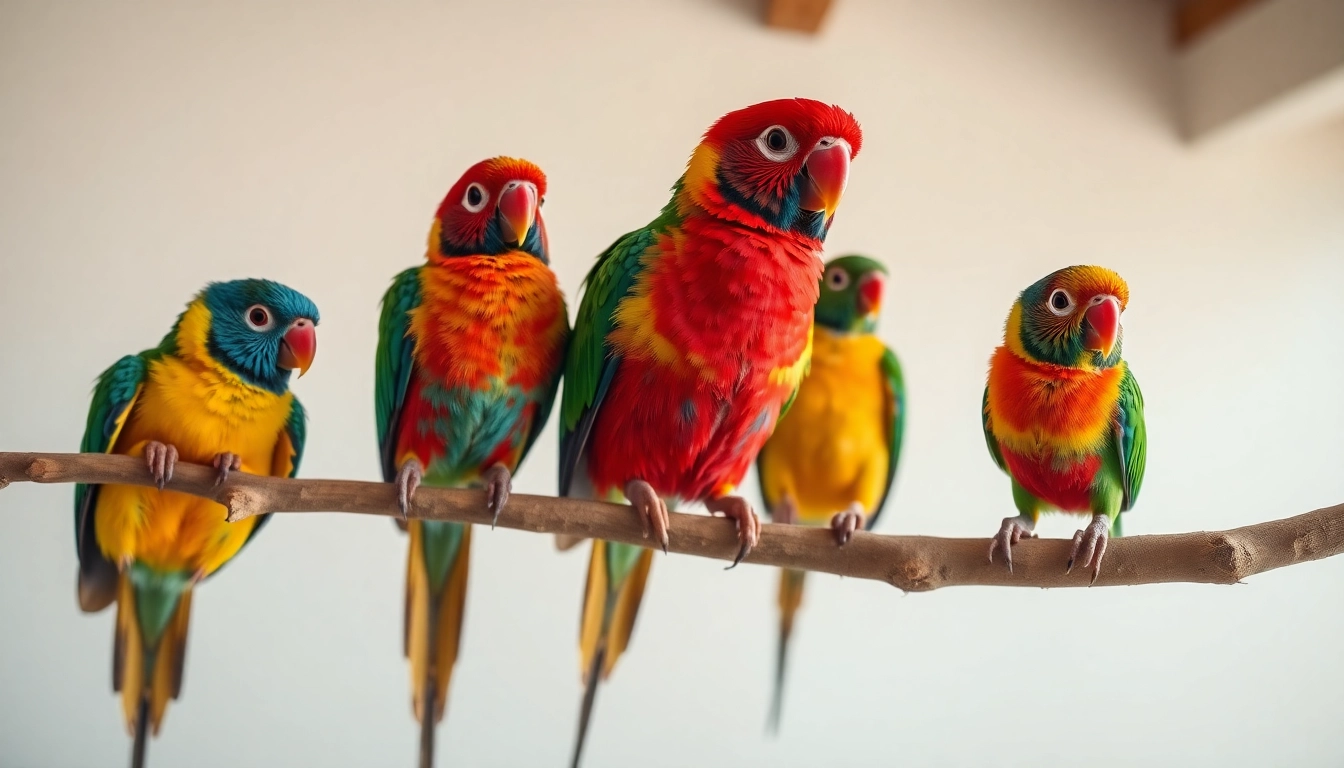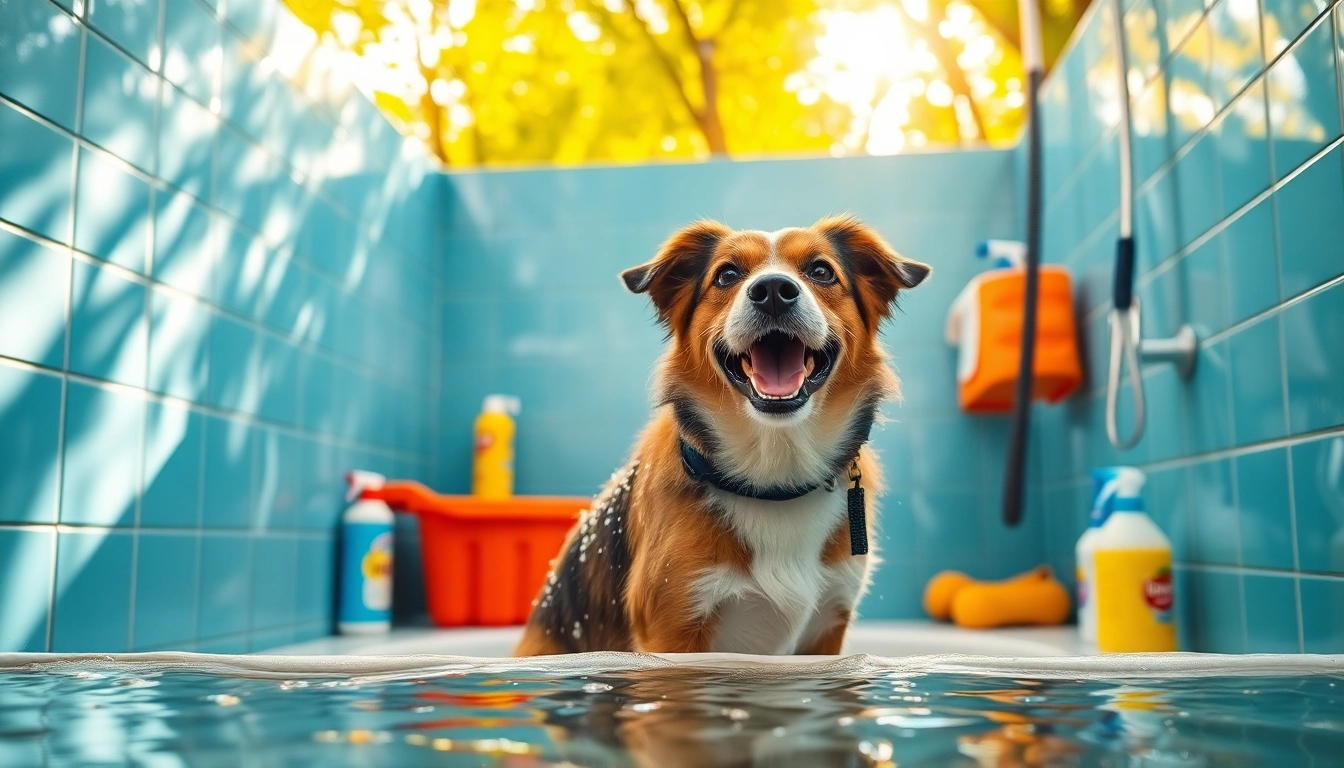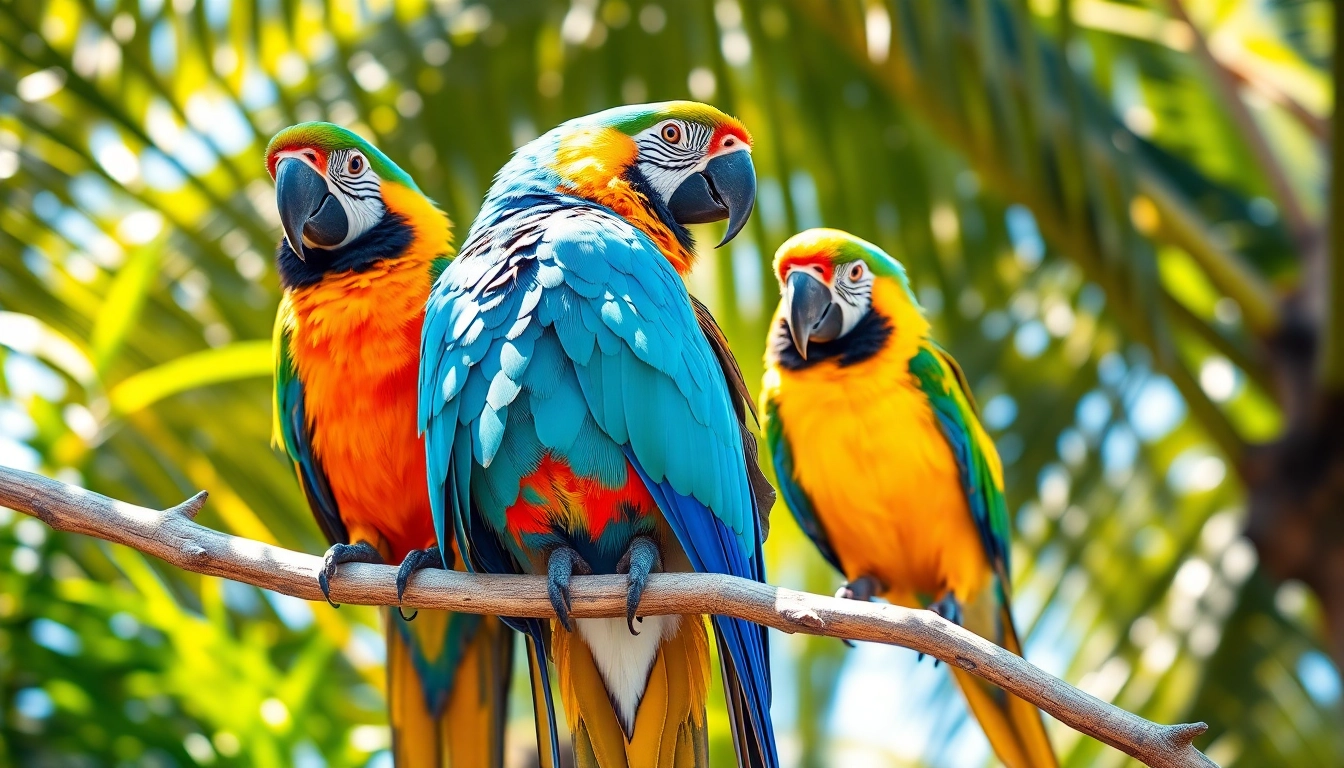Understanding Different Types of Pet Birds and Their Needs
Choosing the right pet birds for your home begins with understanding the diverse species available and their unique requirements. From small, vibrant finches to majestic parrots, each bird type offers distinct characteristics, care needs, and personality traits. Knowing these differences helps prospective owners select a bird that aligns with their lifestyle, experience level, and the environment they can provide.
Popular pet bird species and their characteristics
Among the most popular pet birds are parrots, canaries, finches, cockatiels, and budgerigars. Parrots, including African grey parrots and blue and gold macaws, are renowned for their intelligence and social nature but require ample mental stimulation and space. Canaries and finches are smaller, easier to care for, and ideal for beginners, offering vibrant colors and melodic singing. Cockatiels and budgerigars strike a balance, being moderately easy to care for while still offering companionship and playful interactions.
Each species exhibits specific behaviors. For instance, parrots tend to be more interactive and require social engagement, while finches thrive in community groups and exhibit lively flock behaviors. Understanding the natural habitats and instincts of these birds informs their cage setup and daily care routines, fostering their well-being and happiness.
Habitat requirements for various pet bird types
The habitat setup varies widely across species. Large parrots need spacious cages with horizontal bars for climbing and sturdy perches, along with mental enrichment toys. Smaller birds like finches prefer cages that allow flight and social interaction, with appropriate perches, feeders, and enrichment items such as mirrors or swings. Ensuring proper ventilation, comfortable temperature, and avoiding drafts are crucial for all birds.
A key aspect is understanding each species’ natural environment—arboreal birds need branches and varied heights, while ground-dwelling species require less vertical space but still benefit from environmental enrichments that mimic their natural habitats. Proper habitat design directly impacts stress levels, physical health, and behavioral stability.
Choosing the right pet bird for your lifestyle
Selecting a pet bird hinges on your daily routine, living space, and experience level. Busy individuals may prefer smaller, low-maintenance species like budgerigars or canaries. Those with more time for interaction and mental engagement might opt for parrots or cockatoos. It’s also vital to evaluate whether your household can accommodate the noise levels, dietary needs, and social requirements of the chosen bird.
Assess your willingness to invest in ongoing care, training, and enrichment—carefully matching a bird’s needs with your lifestyle ensures a rewarding companionship and promotes long-term health and happiness for your feathered friends.
Creating a Safe and Stimulating Environment for Your Pet Birds
Designing an engaging cage setup
The cage is the primary environment for your pet bird, and its design can significantly influence behavior and well-being. A well-structured cage should be spacious enough to allow natural movements, such as flying or hopping, with horizontal bars for climbing. Including a variety of perches made of different materials and diameters prevents foot ailments and provides sensory enrichment.
Toys, mirrors, swings, and foraging devices stimulate mental activity and prevent boredom. Rotating toys regularly keeps the environment engaging and prevents birds from becoming too accustomed or bored with their surroundings. Materials should be non-toxic, and cage bars should be spaced appropriately to avoid escapes or injuries.
Safe location and enrichment tools in pet bird care
Positioning your bird’s cage in a safe, quiet area away from drafts, direct sunlight, and kitchen fumes reduces environmental stress. Placing the cage at eye level fosters interaction and makes your bird feel more secure. Enrichment tools such as natural branches, foraging puzzles, and social interaction with human caregivers enhance mental stimulation and mimic natural behaviors.
Managing environmental risks and health hazards
Regularly cleaning and disinfecting the cage prevents disease buildup. Avoid exposing birds to fumes from cleaning products, smoke, or aerosol sprays. Ensuring proper humidity and temperature greatly reduces respiratory issues. Also, keep household plants, chemicals, and other pets out of reach, as many common household items pose poisoning risks to birds.
Feeding and Nutrition Tips for Happy Pet Birds
Balanced diet essentials for pet birds
A balanced diet forms the cornerstone of good health. High-quality commercial pellets tailored to your bird’s species provide essential nutrients, supplemented by fresh fruits, vegetables, and occasional whole grains. Introducing a variety of textures and flavors encourages healthy eating habits and mimics their natural varied diet.
Fresh water should always be available and changed daily. Incorporating cuttlebone or mineral blocks offers essential calcium and mineral intake, especially for growing or breeding birds. Monitoring portion sizes and avoiding overfeeding prevent obesity and associated health problems.
Foods to avoid in pet bird diets
Certain foods are toxic or harmful to birds and should be strictly avoided. These include chocolate, caffeinated beverages, avocado, onion, garlic, and alcohol. Additionally, high-fat, salty, or sugary human foods can cause metabolic issues and should not be fed to pet birds. Careful attention to ingredient labels and portion control is essential to prevent accidental ingestion of hazardous substances.
Supplements and treats to enhance their health
Supplements like vitamins or omega-3 fatty acids can support overall health, especially if dietary variety is limited. Treats such as millet sprays or small amounts of fruits and vegetables serve as enrichment rather than daily fare. Always consult with an avian veterinarian before introducing supplements or treats to ensure they meet your bird’s specific nutritional needs.
Training and Socializing Pet Birds Effectively
Basic training techniques for pet birds
Training enhances bonding, reduces behavioral issues, and facilitates health care routines. Positive reinforcement—using treats, praise, or gentle vocal cues—encourages desired behaviors. Short, consistent training sessions, ideally daily, create a stable routine and build trust. Teaching your bird to step onto your hand, or to stay calm during vet visits, improves overall management.
Socialization practices to reduce stress and foster bonds
Early and gentle socialization with humans and other safe pets creates confident birds. spending quality time, speaking softly, and offering treats help build trust. Allowing your bird to explore outside their cage under supervision can strengthen your bond and reduce nesting or fear-based behaviors.
Addressing common behavioral issues in pet birds
Behavioral challenges such as biting, screaming, or feather plucking often stem from stress, boredom, or inadequate environment. Providing enrichment, ensuring sufficient social interaction, and establishing consistent routines mitigate these issues. When problems persist, consulting an avian behaviorist or veterinarian offers tailored solutions.
Maintaining Long-term Health and Happiness of Pet Birds
Regular health checkups and vaccination schedules
Routine veterinary visits—at least annually—detect early signs of illness and keep vaccinations up to date, especially for species prone to disease. Observing your bird’s normal behavior helps identify subtle health changes promptly.
Signs of illness and when to seek veterinary care
Warning signs include lethargy, feathers plucking, regurgitation, abnormal droppings, or difficulty breathing. Immediate veterinary consultation prevents minor issues from escalating into serious health crises.
Keeping pet birds engaged and mentally stimulated
Ongoing enrichment through new toys, foraging opportunities, and social interactions preserves your bird’s mental acuity. Rotating toys, training sessions, and environmental adjustments combat boredom and promote a joyful, stress-free life.



